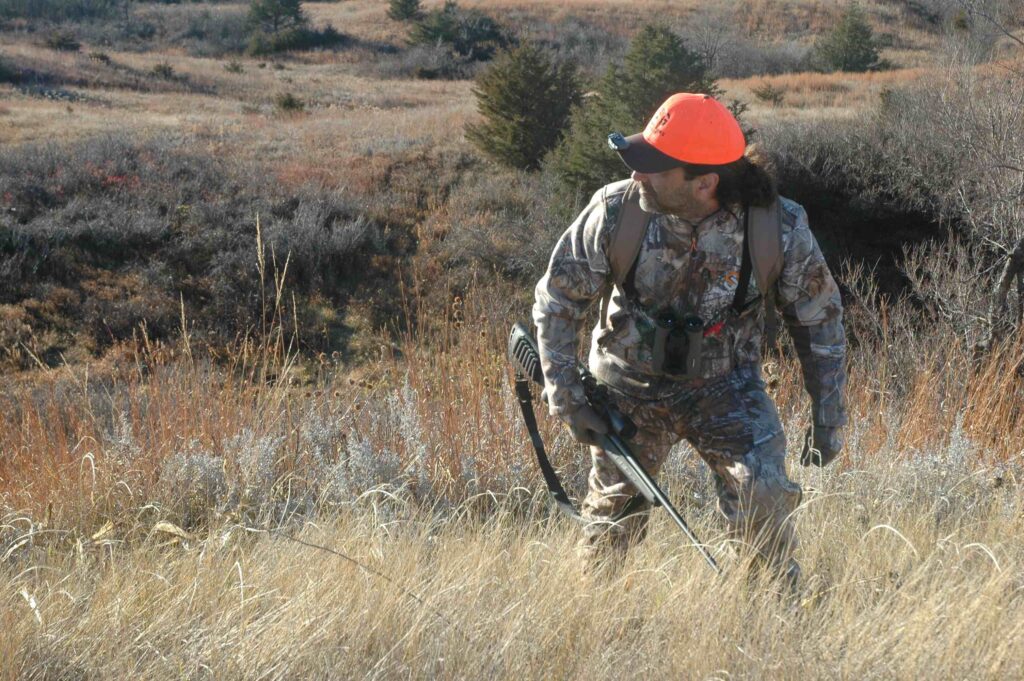 What you get from handloads has as much to do with priorities as with procedures.
What you get from handloads has as much to do with priorities as with procedures.
The math was irrefutable. I’d have to handload at least two dozen boxes of cartridges to break even. But profligacy is the curse of youth. I mailed the check. Many years and uncounted cartridges later, I still use that $15 Herter’s press.
Saving money still brings many shooters to handloading. While prices of components and tools have soared, the cost of factory loads has kept pace. Beyond economy, handloading enables you to assemble cartridges not commercially offered or temporarily unavailable.
Handloading, you have more component options than if limited to factory loads. You can test new combinations without having to buy 20 rounds at a time. You can load for more power or less recoil as the spirit moves, and tailor ammo to your rifle, instead of betting your next hunt or match on what performed well in someone else’s.
Beyond economic and ballistic benefits, there’s much to gain by making ammunition. It’s fun and fulfilling! You fuss with things that once got no attention, because you now control more variables. An analytical view of ammunition elevates your shooting IQ. When you shoot more often and have more invested in each shot, your marksmanship improves.
Handloading, you instantly have many options for new cartridges with few commercial loads.
Presumably you’re not dithering over the purchase of a $15 press. Still, you’re smart to ponder why you might start handloading – or why you’ve been at it since Sputnik. Your reasons for doing anything affect how you go about it, how long you persevere and what you accomplish.
Accuracy is arguably the defining measure of good handloads. While X-ring precision is cause célèbre for any hunter, only the gimlet-eyed “varminter” aiming through powerful glass at distant rodents has reason to demand it. Most big game is killed inside 200 yards. Vitals ranging in size from cantaloupes to beach balls should be hard to miss. More important: reliable function. Every cartridge must feed, chamber, fire, extract and eject. The hunt, even your life, can depend on it. “Working up” hunting loads, experienced hunters focus on reliability. Some tips:
Use new or once-fired cases. You don’t want tired brass to separate, leaving only the case head in the extractor when a departing elk begs a second hit or a Cape buffalo is coming to wipe the long grass with your shirt.
Neck-sizing extends case life, as it reduces stretch at subsequent firings; but it can make chambering difficult under field conditions. Also, because not all chambers for a given cartridge are identical, neck-sizing makes sense only if the cases will be used in the rifle from which they came. You’re smart to full-length-size cases for slide- and lever-action rifles, and autoloaders, as they lack the camming power of bolt-actions.
A ‘50s wildcat for big game, the .30 Gibbs remains a handloading project. Dies are available!
Clean primer pockets and double-check them for obstructions.
Some sources advise using standard primers unless Magnums are called for. My practice is to use Large Rifle primers to charges of 60 grains or so, Large Rifle Magnums from there.
Keep case lube and any other chemicals off primers.
Before choosing powders, consult multiple sources of load data. For any given cartridge, many powders suffice, a few excel. You needn’t get too deep into the weeds; manufacturers of powders, bullets and ammunition have done the heavy lifting. Their manuals are your investment in better handloading!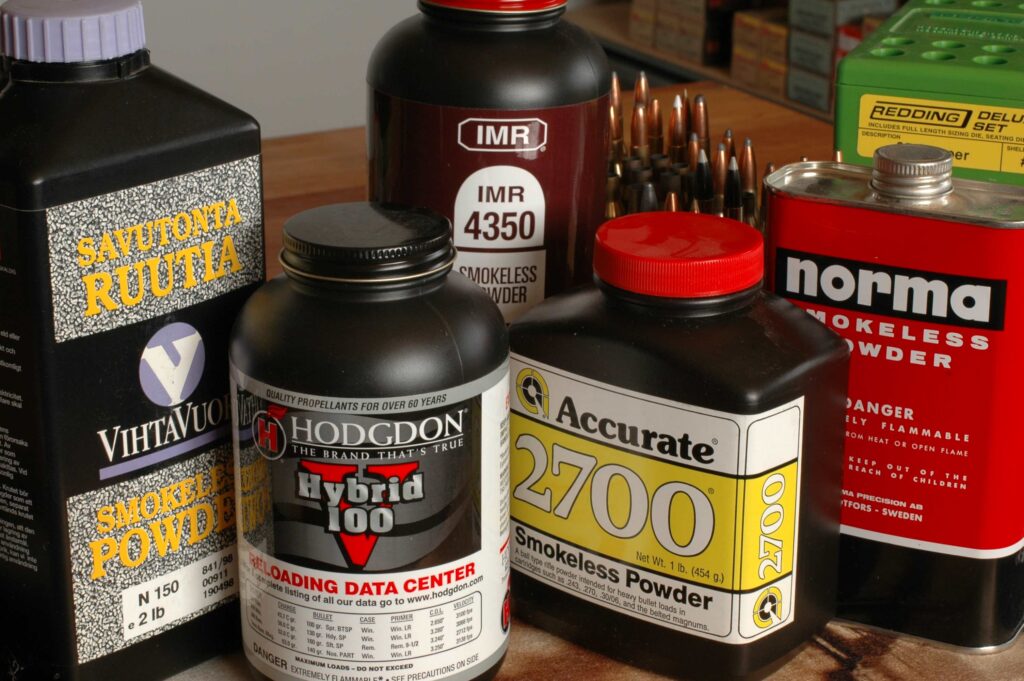
Powders have proliferated. Tap more than one reloading manual. No need for maximum loads!
Long ago, starting to load for the .270 Winchester, I unearthed this chestnut. “Card off a loose column of H4831, seat a bullet and go huntin’.” That’s flawed advice. Cases from different sources can differ in wall thickness, thus, capacity. Also, extruded (“stick”) powders like H4831 hardly stack predictably when funneled into a case. Like logs fetched up in jams on a river, they lodge randomly against each other and the case walls. Identical cases may hold different charges.
“Starting loads” in most current manuals are pretty conservative. But you won’t go wrong starting there, then slowly boosting charges. Increments depend on the case and powder. Hiking charge weight 1 grain in the .22 Hornet can be a 10-percent jump. In the .300 Weatherby, 1 grain is only a 1 ½-percent increase. Don’t expect changes in pressures and velocities to match those in propellant weights, by percentage. Savvy handloaders shave increments as they approach listed maximums or target velocities. At those levels, a small tweak in the charge can affect accuracy.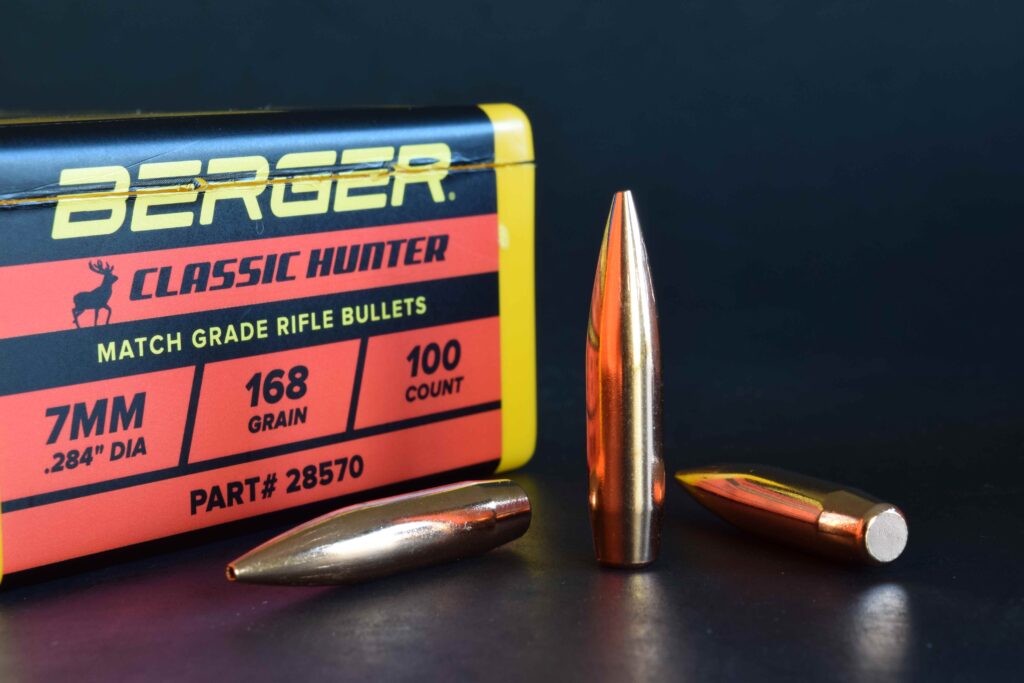
Handloaded with new bullets, cartridges once thought ordinary shoot flatter, more accurately.
I prefer charges that settle at or near the bullet’s base and pick powders with that in mind. Crushing powder can change its burning characteristics, while space in loaded cartridges allows powder to shift around, introducing powder location as another variable to affect accuracy.
Lightly compressed charges have no liabilities. With very slow powders in small- and medium-bore magnums, bullets seated snugly into the column fly as accurately for me as those that don’t touch the powder. Reasonable charges have shown no evidence of excess or widely varying pressures.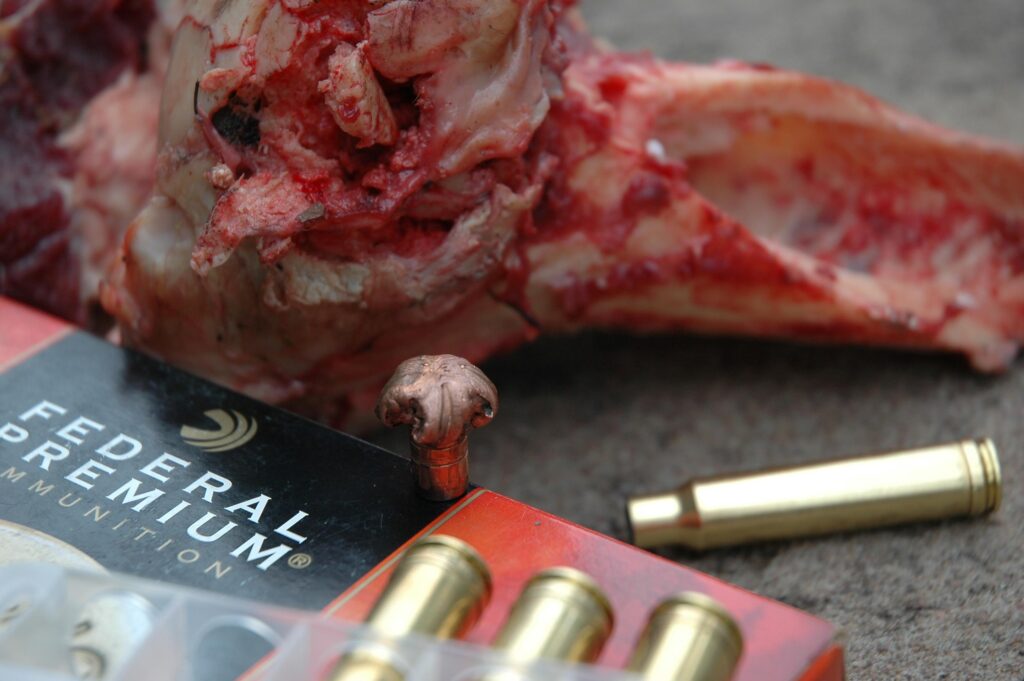
Factory-loaded bullets can excel in handloads too. This Federal bullet from a .338 Winchester Magnum load struck a buffalo’s shoulder knuckle and snapped its leg.
Avoid reducing charges of slow-burning powders by more than 25 percent. These have been shown to cause sharp, dangerously high pressure spikes. They’ve been difficult to replicate, so the cause is unknown. Theories: The primer’s blast blows the powder in a wad into the case neck, or, as primer flame jets across horizontally positioned powder, waves of pressure from the back and front of the case collide.
I hand-weigh each load for hunting. Powder measures work fine for spherical propellants and short-cut “sticks” that meter like sand; but I like to watch each charge move a scale. After
each batch, I check visually that each cartridge has powder. Once, a friend encouraged me to try his handloads in his rifle. At the bench, they performed well until one brought only the “clack” of the hammer. Had I neglected to cycle? Ejecting the spent case so indicated. As I chambered a fresh round, an angel tapped my shoulder. I opened the action. No light came through the bore. My pal had forgotten to charge the previous case. The primer’s blast had pushed the bullet half-way up the bore. Its report was contained in the rifle and muffled by the hammer’s fall. Another shot would likely have shredded the rifle and my hand.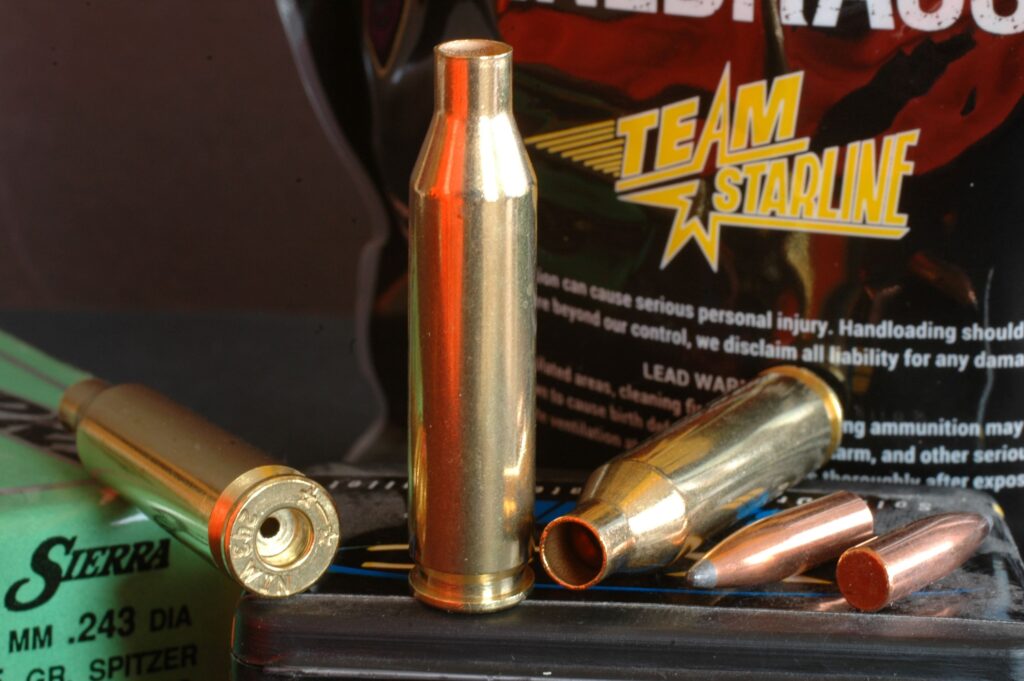
Handloading for a hunt, use new or once-fired brass. Primer pockets should appear this clean.
For hunting, I pick bullets mainly for their terminal performance – that is, for how they behave after a hit. There’s no need for half-minute accuracy afield. Groups of 1 ½ inches at 100 yards show the rifle will hold bullets inside 6 inches at 400 yards – a very long shot. Nor must those bullets reach maximum listed speeds, or perform like match bullets at distance. In or near cover, at ranges most game is killed, high ballistic coefficients count for little. Quartering shots call for deep, straight-line penetration and bullets that retain their integrity during upset.
If you hunt light-boned game on the prairie, where most shots are longer, deliberate and at front ribs from the side, sleek, fast-opening bullets make more sense. Bear in mind that high velocity causes violent upset. Bullets that expand reluctantly and stay together during penetration after 3,000-fps impact up close may not open as readily as you wish when distance pulls velocity below 1,800 fps. And vice versa.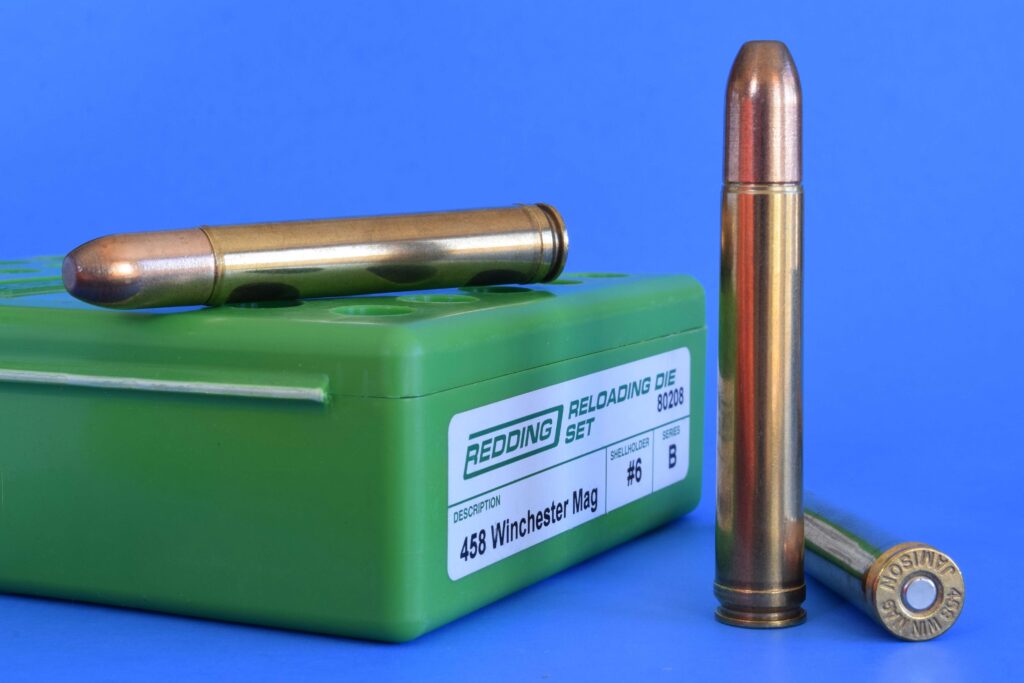
Crimped bullets counter stiff recoil. With seating or crimp die, crimp to the front of the groove.
Lead-core or lead-free? Both types of bullets can fly accurately; both can deliver double-diameter upset; both can be engineered to drive deep in game. For 100-percent weight retention, all-copper hollowpoints like the Barnes TSX have the edge. Lead-core bullets offer more weight for any given bullet length. I’m sweet on lead-core bullets designed for tough game: Swift’s A-Frame, Federal’s Trophy Bonded and Nosler’s Partition and AccuBond.
Seating bullets, keep cartridges to SAAMI’s standard for overall length or well within the limits set by your magazine. Seating bullets out to reduce bullet jump into the rifling can enhance accuracy in rifles with long throats, but a bullet kissing the lands can hike pressures and impede chambering. Should the lands get a bite, they can tug the bullet free when you extract the unfired round, plugging the bore and spilling powder into the magazine.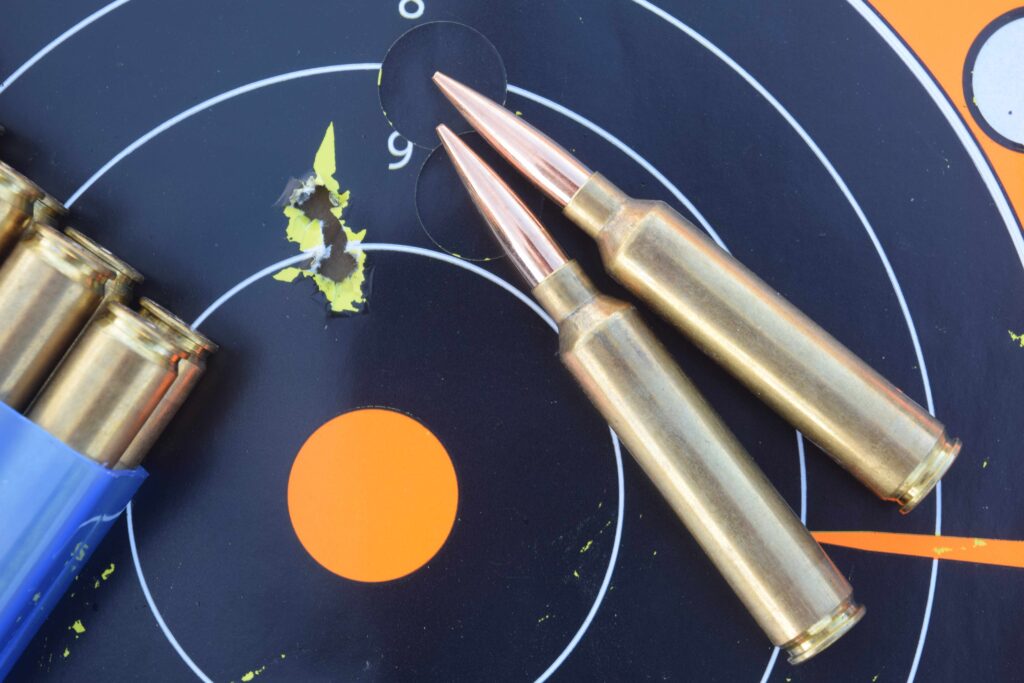
Long-range loads define the 28 Nosler. Handloaders can use myriad 7mm game bullets too!
To check throat length without tools, seat a bullet well out but backward in a case sized to hold it snugly but not tightly. Chamber it. The lands will push the bullet back into the case and leave the bullet’s heel where rifling begins.
I seldom crimp bullets, as crimping becomes another variable in the handloading process. But some handloaders insist a crimp ensures uniform bullet release and can improve accuracy. In rifles of stiff recoil, crimping prevents bullet creep in magazines. A bullet allowed to bear against the box can suddenly make your rifle a single-shot! Spring pressure in tube magazines can, with recoil, nudge bullets back into their cases.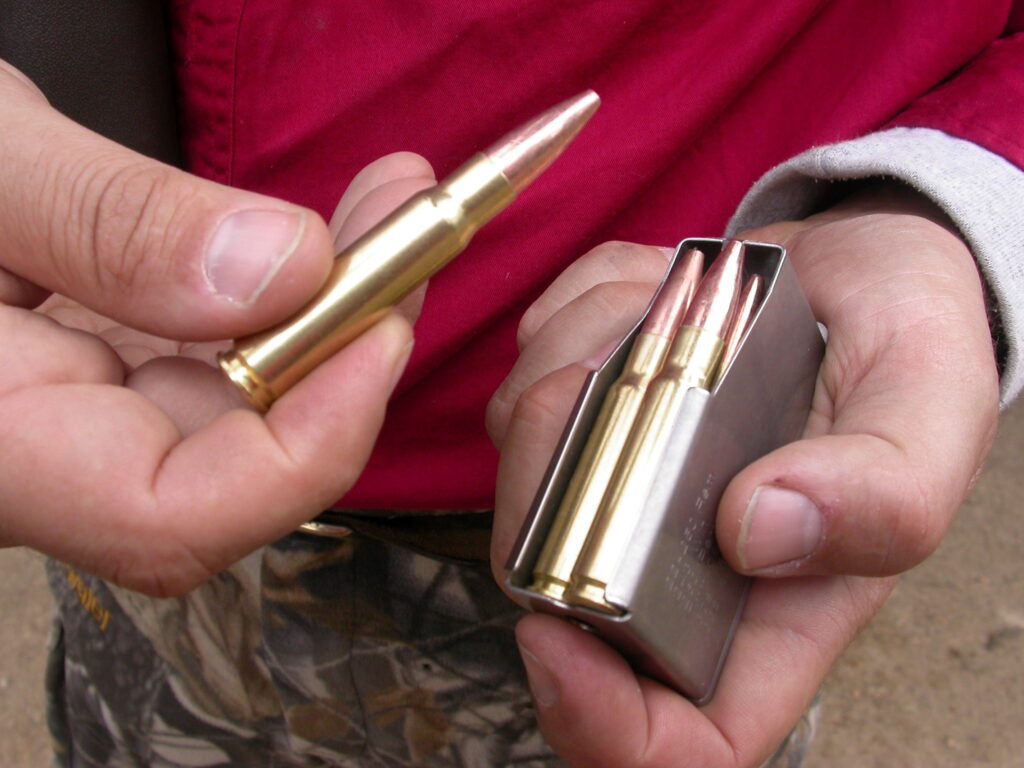
Check each handload by cycling it from the bottom of the magazine through the chamber.
Lee’s crimp die is a simple, effective crimping tool. You can also crimp with the seating die. Before seating, screw that die in until it touches the case mouth. Give it another half-turn for a light crimp, up to a full turn for a heavy crimp. Adjust the seating stem so as the die presses the case mouth into the crimp groove or cannelure, the mouth winds up against the forward edge of the groove. Crimp only bullets with a crimp groove.
Labeling is an easy finish to a box of handloads, but it’s often neglected. Don’t rely on memory! To ensure against mix-ups from a spilled box of cartridges with different charges and the same bullets, color the primers with Magic Markers. Keep a key to colors in the box.
Handloading, you learn a great deal from tools that appear on your bench, to gauge head expansion, bullet run-out and seating depth, to trim cases, turn necks and clean primer pockets. A chronograph – mine an Oehler 35 – shows the results. For these and cartridge components, turn to industry specialists like Midsouth Shooters Supply. #
Sidebar: Rifle within reach!
Keep your rifle at the loading bench, to double-check the fit and function of ammunition with each change in procedure or finished cartridge dimensions.
Bear in mind the taper of some magazines. Checking feeding with a couple of cartridges, you can’t guarantee the last in a full stack will rise smoothly. I once loaded old 300-grain solids in .375 H&H cases for a safari. Dutifully, I seated them to match overall length of factory loads.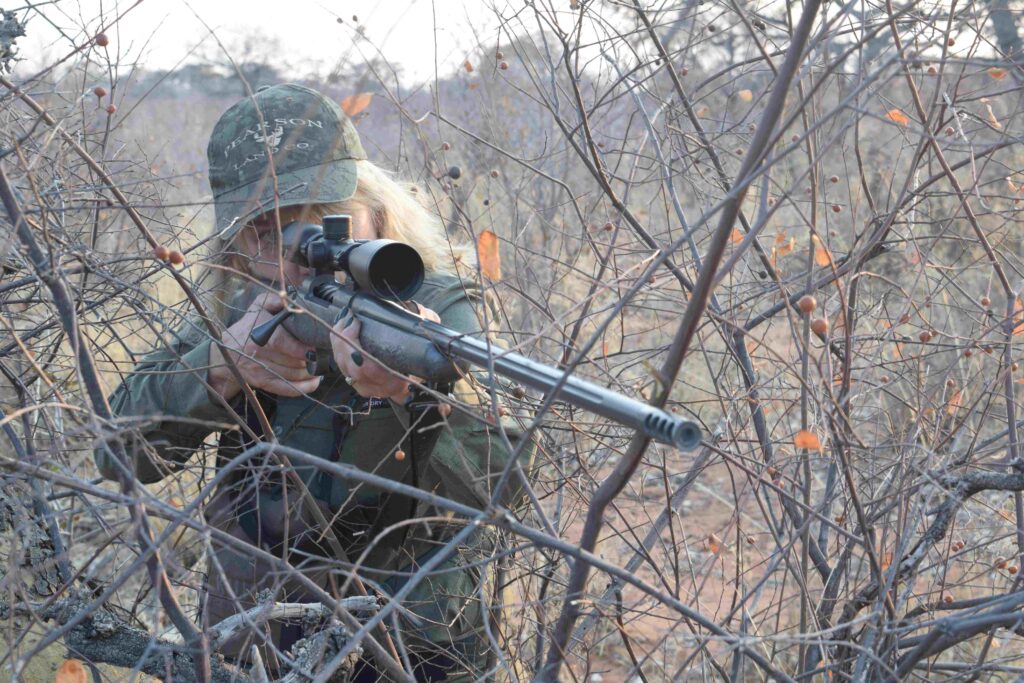
A safari can hinge on one cartridge. Handloading, you get the satisfaction of producing it!
Pressing a cartridge into my Model 70’s magazine, I slicked it up with the bolt. All was well. But in the field, replacing softnose loads with the solids on a buffalo track, I found only one would enter the magazine without binding. These bullets had very square noses, the “corners” of which contacted the radiused front of the box. So instead of four rounds, the rifle held only two: one in the chamber, the other at the open top of the magazine. In a subsequent dust-up with buffalo, my fingers were mighty busy fumbling cartridges into that Winchester!
In hunting handloads, sure feeding and ignition matter more than high velocity, fine accuracy.
Check each hunting handload by cycling it from the bottom of the magazine up into the chamber. Ditto for cartridges feeding from tube magazines.
Sidebar: How many?
How many cartridges must you assemble to test a load? I usually load three to check for function and pressure signs (hard bolt lift, ejector marks, flattened primers, head expansion over .0015 inch). Nearing “final” charges, I load at least five for the chronograph and accuracy trials.







